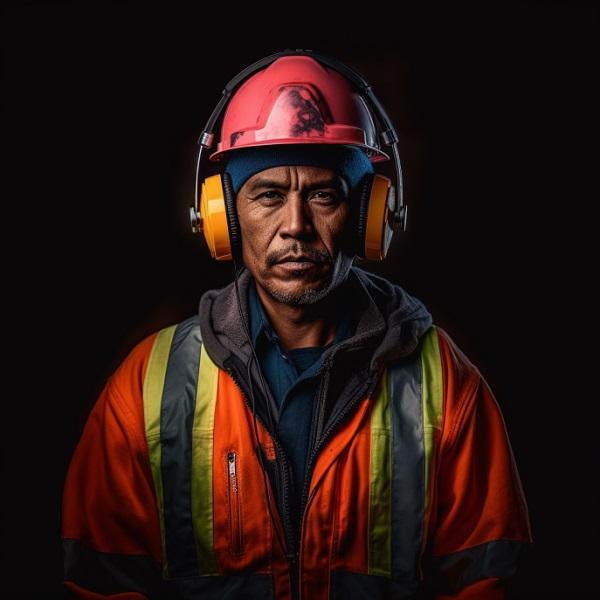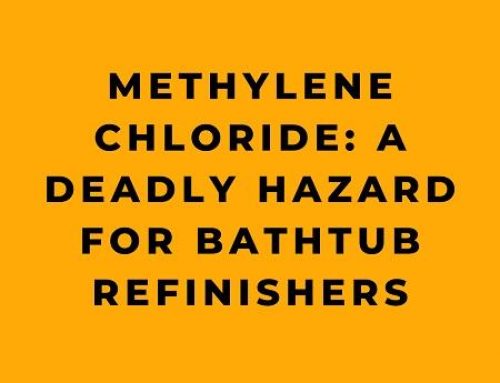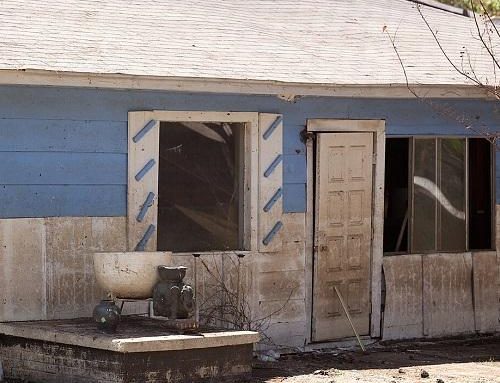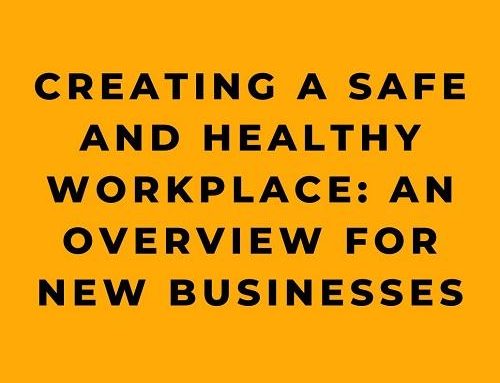Alright, let me level with you. If you’re a hands-on sorta person, if you get a kick out of building stuff or if the title ‘contractor’ sounds about right, then this little manual here is just for you. Small-scale contractor or just a guy with a hammer, it doesn’t matter. I urge you to take a good, hard look at the references we’ve got here and drop by the OSHA website for a bit more reading.
Now, don’t get me wrong, this guide ain’t no rule book, and it ain’t adding any new hoops for you to jump through legally. It’s more like advice from a buddy who’s been there and done that. It’s packed with practical tidbits to help you, the diligent construction worker, and your diligent boss, understand and manage the racket on your job site. Now, it’s your duty to stick to the health and safety standards laid out by either OSHA or a state-approved plan similar to OSHA’s. Moreover, under Section 5(a)(1) of The Occupational Safety and Health Act, your boss is required to provide you with a workplace that’s free from hazards that can knock you out or worse.
If there’s a recognized hazard at your worksite and your boss isn’t taking reasonable steps to fix it, they can be cited under the General Duty Clause. But mind you, just not following this guide doesn’t mean they’re in violation of the General Duty Clause. Citations are issued only based on standards, regulations, and yes, that same General Duty Clause.
Now, onto the meat and potatoes of this thing.
Why is job site noise control important to me?
Let’s start with a simple question: Why should you give two hoots about noise control on your job site? You might think it’s just part of the gig, but long exposure to loud noise can result in hearing loss, and there ain’t no surgery or fancy device that can fix that. Your worksite is probably as noisy as a football game in overtime, and that noise is doing you no good.
High noise levels can mess with your productivity and even lead to accidents by drowning out warning signals. Noise-induced hearing loss can impact your ability to hear the subtleties in speech and can make social situations more challenging, even leading to feelings of isolation. Noise exposure can steal from you the joy of a friendly chat, playing with your kids, or just enjoying your favorite activities.
The good news is you can prevent all of this. The bad news is, if the damage is already done, it’s done. You can’t undo it. More often than not, hearing loss happens gradually, and you might not even realize it until it’s too late.
And it’s not just your ears that noise can damage. Recent research has found that folks consistently exposed to high levels of noise at work may be two-to-three times more likely to end up with serious heart disease compared to those working in quieter environments.
You might be experiencing hearing loss if:
- You struggle to hear people when you’re in a group or if there’s background noise.
- Folks seem to be mumbling more often than not.
- You’re constantly asking people to repeat themselves.
- Telephone conversations have become a real challenge.
- You experience a ringing or strange noise in one or both ears.
- You’re having trouble hearing alarms or your cell phone’s ring.
How does hearing damage happen?
So how does this damage happen? A single exposure to a loud noise, like a blast, can mess with your hearing in an instant. But more often, prolonged exposure to loud noise can cause slow, but irreversible, hearing loss.
Damage can occur even with noise levels akin to that of running a lawn mower for eight hours. Initially, you might experience a temporary loss of hearing that could last up to 48 hours. Over time, though, the damage becomes permanent, and the tiny hair cells in your inner ear that transmit sound to your brain get destroyed. And unfortunately, once they’re gone, they ain’t coming back.
Here are some general guidelines to protect your hearing on the job:
- Wear Hearing Protection: If noise levels are high, use earplugs or earmuffs to reduce the noise reaching your ears. There’s a wide variety of hearing protectors available out there, so make sure you choose ones that are suitable for your job and comfortable to wear. Remember, they only work if you use them correctly and consistently.
- Regular Hearing Tests: Regular hearing tests can help detect early signs of damage, allowing you to take action before the hearing loss becomes permanent. This should be part of your employer’s hearing conservation program.
- Know the Noise Levels: If you work in an environment with a lot of noise, get a clear idea of the noise levels you are exposed to. Noise is measured in decibels (dB), and prolonged exposure to noise levels above 85 dB can cause hearing damage.
- Reduce the Noise at Source: Where possible, use quieter equipment or modify existing equipment to reduce noise at the source. This is the most effective method of noise control.
- Limit Your Exposure: Limit the time you are exposed to high noise levels. Regular breaks in a quiet area can help reduce your overall exposure.
- Use Barriers and Enclosures: Barriers and enclosures can be used to block noise from reaching other areas of the worksite. This is particularly useful in construction sites where noise from machinery can be very high.
- Good Communication: Make sure that you and your coworkers are aware of the risks of noise exposure and the steps you can take to protect your hearing. Clear and effective communication can go a long way in preventing hearing loss.
Remember, this isn’t just about the here and now. It’s about your future too. You don’t want to be robbed of the pleasure of hearing your grandkids’ laughter or your favorite tunes on the radio, do you?
It might take some effort and some getting used to, but trust me, your ears will thank you. Now, get out there and make some (reasonable) noise!
What can be done about job site noise levels?
Noise. It can sneak up on you, unseen, unheard until it’s too late. Luckily for us, it ain’t all doom and gloom. We got ourselves a plan. A three-step noise hazard control process. Simple as pie, but effective as a Swiss army knife.
Step one, we reduce the noise. No need for any of that oversized, ear-rattling equipment. Opt for something more compact, more quiet, if you will. Take a generator, for example. A smaller, quieter one does the job just as well, without waking up the whole neighborhood.
Secondly, we move it. Distance is your best friend here, folks. No need to cozy up with that noisy ol’ machine. Move it as far as you can, while still getting the job done. Use extension cords, additional welding leads, and air hoses to make that distance. The farther away you are, the less noise it’s going to make in your ears. Got a generator chugging away? Don’t let it be the life of the party. Move it out, face it away, whatever works. And if you ain’t required to be in a loud area, do yourself a favor, find a quieter spot.
The last piece of this noise-beating trifecta is to block it. You can’t turn off the world, but you can put a barrier between you and the noise. A simple plywood barrier can do the trick, keeping that pesky noise at bay. Think of it as an oversized, five-sided wooden box for your generator. Toss in some fire-resistant acoustical absorbing material inside for good measure. If the generator’s on dirt or sand, even better. They’ll soak up some of that sound too.
Now, let’s talk upkeep and upgrades. They don’t just make your tools last longer. They can also turn down the volume. Regular maintenance is key. Sharpen the blades, lube the parts, change the seals, install mufflers and swap out any parts that are faulty or worn. It’s like tuning up an orchestra, every piece playing its part to bring the noise down.
Got a piece of equipment that could benefit from a tune-up? It’s on your employer to ensure that maintenance isn’t just a suggestion but a regular event, like brushing your teeth or feeding your dog.
Even that aging equipment that’s been part of the furniture since the dinosaurs roamed can be jazzed up to be a little more silent. Pop on some mufflers, change out the seals, insulate the panels. There’s no tool too old that can’t learn a new trick. Employers should be creative, seeking out ways to hush down the volume on the tools they already have.
And while we’re on the topic of employers, they should be doing their homework, following OSHA’s noise-reduction recommendations. Identifying noise culprits, preplanning to limit exposure, and keeping equipment in check are all part of the gig.
OSHA allows employers to mix and match a combo of hearing protection devices, engineering controls, and administrative controls to cut down worker exposures to below 90 dBA. And if your work site gets up to 85 dBA, you should have a hearing protective device at your disposal.
What can be done if engineering and administrative controls are not enough?
Now, what if all the noise control in the world doesn’t cut it? Well, then you’re going to want to get serious about selecting and using hearing protection. There’s an array of hearing protection options out there, each tailored to specific noise conditions. But remember, no matter how good your gear is, if you don’t wear it properly and keep it on in high-noise areas, it ain’t going to do you any good.
Convenience and comfort play a big part in choosing the right gear. Some offer more noise reduction, while others might be more practical depending on the level of noise you’re facing. There’s no one-size-fits-all here.
Here are the categories of hearing protection available for construction workers:
- Roll Down Foam Earplugs
- Features:
- Fit many differently shaped ear canals.
- Provides good protection for most noisy environments.
- Convenient and disposable.
- Concerns:
- Must be inserted properly to get the highest possible protection.
- If the plug doesn’t make a good seal, it won’t protect your hearing.
- Features:
- Reusable Earplugs
- Features:
- Many have flanges and handles.
- Comes in different sizes.
- Convenient to carry with cords.
- Reusable and washable.
- Concerns:
- Preformed so may not fit as wide a variety of ear canals as foam plugs.
- May require a different size for each ear.
- Must keep them clean.
- Features:
- Custom Molded Earplugs
- Features:
- Molded to the user’s ear.
- Always comfortable and suitable for long-term wear.
- Best for difficult-to-fit ears.
- Concerns:
- Must be made by a licensed hearing protection provider.
- Features:
- Canal Caps
- Features:
- On a band, can be worn under the chin, over the head, or behind the neck.
- Can be put on and taken off quickly.
- Concerns:
- Not as comfortable as other devices.
- Not as much protection as other devices.
- Features:
- Earmuffs
- Features:
- Easy to use and wear.
- Fit most people.
- Easy to keep clean.
- Concerns:
- Can be hot and heavy.
- May be more difficult to get a good fit with glasses and/or may interfere with other protective gear.
- Features:
- Flat Attenuated Earplugs
- Features:
- Flat reduction of noise over all frequencies.
- Have a baffle to reduce impact noise.
- Concerns:
- Can be expensive.
- Must be custom fitted.
- Features:
- Communication Earplugs
- Features:
- Allows for radio communication while still reducing noise.
- Concerns:
- Potential concerns could include cost, potential interference with communication, and proper fitting to ensure adequate noise reduction.
- Features:
Your employer should be on hand to guide you through selection, fitting, and maintenance. And if you need hearing protection and aren’t getting it, don’t be shy, ask for it. If they’re still playing deaf, you can request an OSHA inspection.
When choosing the right gear, take into account the noise level of the task, how much you need to communicate, convenience, comfort, hygiene, and the noise reduction of the device. Make sure to follow the manufacturer’s guidelines for use and maintenance, and replace or fix devices that are worn, dirty, or broken.
Conclusion
Hearing protection is a must for those noisy jobs, but don’t forget to protect yourself from high noise exposures at home too. And just so we’re clear, headphones or hearing aids don’t count as substitutes for hearing protection. If you’re consistently dealing with high levels of noise, your employer should be providing regular hearing tests. If they’re not, find an audiologist to do the job. Regular tests help monitor your hearing over time and pick up any changes. The tests aren’t too pricey and take about 20-30 minutes. And there you have it. A survival guide to noise on the job. Remember, you’ve got one set of ears, folks. Treat ’em right.
In the cacophony of our daily routines, the ears tend to get the short end of the stick. The roar of the concrete mixer, the clamor of heavy machinery – construction sites are essentially symphonies of noise. Yet, amidst the discord, it’s crucial to remember that our hearing health isn’t expendable. It’s a gift that needs to be safeguarded, especially in the face of hazardous sound levels. And, as we shift gears, I’d like to put your focus on an exceptional initiative designed to protect this precious gift.
Imagine a world where understanding and mitigating noise hazards is second nature. Where every American – all 50 million experiencing hearing loss due to exposure to hazardous sounds – is equipped with knowledge and tools to safeguard their ears, especially while on the job. A world where compliance with OSHA’s Hearing Conservation Standard is not just an obligation, but an earnest mission. Folks, that’s the world we’re inviting you to step into with our “Hearing Conservation and Safety” training products.
Whether it’s our fresh “Micro-Learning” courses, or our comprehensive online courses, DVDs, and interactive CD courses, we’ve put together an arsenal of information that’s not just educational, but potentially life-changing. Each offering dives deep into key topics, giving you a grasp of the mechanics of sound, how the ear works, hazardous noise in the workplace, and protective equipment, such as ear muffs, ear plugs, and canal caps. We don’t stop there. We also emphasize the significance of regular hearing tests, and so much more.
Moreover, our “Hearing Conservation and Safety” products aren’t just confined to English speakers. We’ve extended our mission to include Spanish-speaking construction workers as well. As for the curious minds, we’ve got a detailed course outline in PDF format that’s ready for your perusal.
The “Hearing Conservation and Safety” MicroLearning curriculum, offering bite-sized 3 – 5 minute courses, covers topics ranging from “The Mechanics of Sound” and “How the Ear Works” to “Protective Equipment… Ear Muffs” and “Hearing Tests”.
So folks, don’t let the din of the world rob you of your hearing health. It’s time to turn down the noise and tune into safety. Dive right into our suite of products and let’s raise the bar of hearing conservation together. To learn more and begin your journey, click here now.










